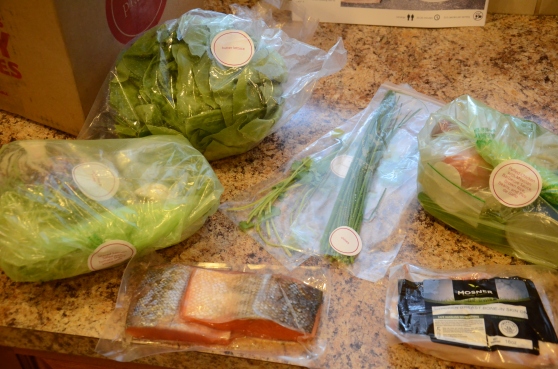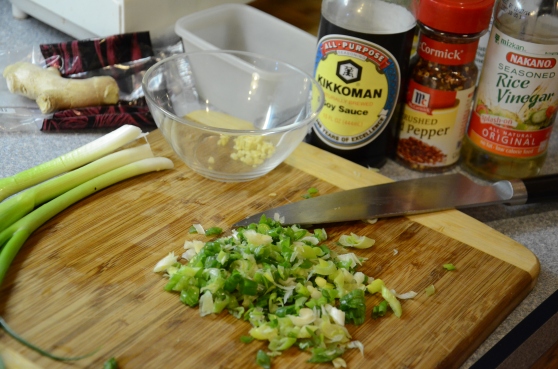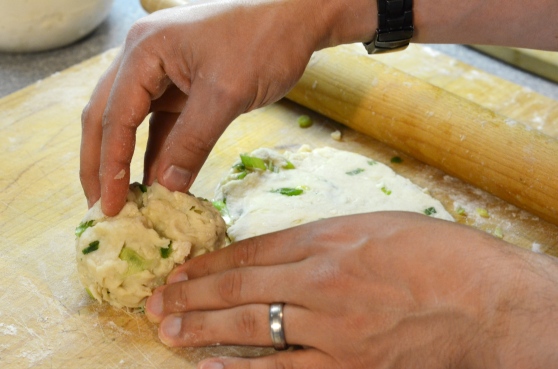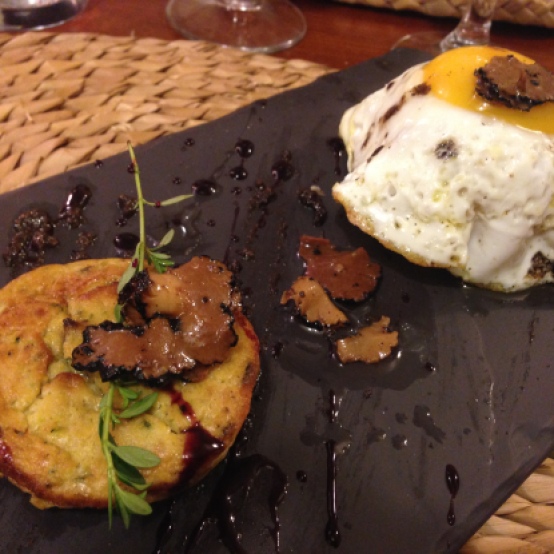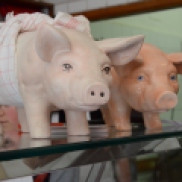Sometimes you need to make cupcakes simply because you have some cute paper baking cups.

OK, you caught me, the red, white and blue paper cups were not the only reason I planned to bake for our Memorial Day party on Monday. Another reason is that the recipe puts the sourdough to use again! Plus, I had all the other ingredients on hand.
Memorial Day certainly lived up to its reputation as the unofficial start of summer. I could not have asked for a more perfect day to spend almost entirely outdoors. Right away, I started the sourdough part of the cupcake batter so it could sit for its allotted time, and then spent the entire morning finishing up weeding and planting my flowers, herbs, and tomato plants in the gardens around my yard. During the afternoon, Matt and I socialized on the deck with friends and family, serving these cupcakes for dessert after enjoying a delectable shrimp boil and a couple of grilled pizzas.
 The cupcakes were irresistible to our crowd, even members of which have a fair amount of self control when it comes to sugar. You can certainly swap in a different icing without the coffee flavor if you are serving to children. Espresso powder (another pantry ingredient that hadn’t been getting much use lately) has the magical effect of intensifying chocolate flavor in baked goods, so I suggest leaving it in the cake portion, if you have it in the first place. And if you don’t have sourdough? Well, if you’re the type who loves baking, get on that. Or just use another favorite chocolate cake recipe.
The cupcakes were irresistible to our crowd, even members of which have a fair amount of self control when it comes to sugar. You can certainly swap in a different icing without the coffee flavor if you are serving to children. Espresso powder (another pantry ingredient that hadn’t been getting much use lately) has the magical effect of intensifying chocolate flavor in baked goods, so I suggest leaving it in the cake portion, if you have it in the first place. And if you don’t have sourdough? Well, if you’re the type who loves baking, get on that. Or just use another favorite chocolate cake recipe.
Sourdough Chocolate Cupcakes with Espresso Icing
Adapted from King Arthur Flour to make cupcakes
Makes about 18 full-sized cupcakes
Cake Batter:
1 Cup sourdough starter, fed and “rested”*
1 Cup milk , whole or 2% is better (I improvised with skim plus a little heavy cream)
2 Cups unbleached all-purpose flour
1 1/2 Cups granulated sugar
1 Cup vegetable oil
2 teaspoons vanilla
1 teaspoon salt
1 1/2 teaspoons baking soda
3/4 Cup unsweetened cocoa powder
1 teaspoon espresso powder (optional)
2 large eggs
Espresso Icing: (this has been scaled down for cupcakes–you’ll need the original recipe’s quantity, or more, if making a layer cake)
2 teaspoons espresso powder or instant coffee dissolved in 2 teaspoons hot water
1/2 Cup (1 stick, 4 ounces) butter
~1/3 Cup plain Greek or regular yogurt, or you can use buttermilk or sour cream
4 Cups powdered confectioners’ sugar
*This is where you have to plan ahead. The sourdough starter needs to be fed regularly anyway, so you could do the feeding the night before to have it ready for this recipe. Remember you may have to “feed” the starter again after taking out a Cup, depending on whether it is overflowing. The process we follow is to discard 1 Cup, add 1 Cup flour and 1/2 Cup water, stir, and let it sit out for 2-4 hours before returning to the fridge. I remembered late that the discarded cup can be used to start a new batch of sourdough, so I could have also fed that to make my batch for the cake.

To make the cake:
In a medium-sized mixing bowl, combine the starter, milk, and flour. Let this mixture rest for 2 to 3 hours in a warm place. It may start to bubble a little bit, and should smell slightly sour in a pleasant way.

In a second bowl, or the bowl of a stand mixer, beat together the sugar, oil, vanilla, salt, baking soda, cocoa, and espresso powder.
Add the eggs one at a time, beating well after each addition.
Add the sourdough mixture to the creamed mixture, combining gently until it all comes together.

The King Arthur Flour recipe warns you that the batter starts out very “gloppy,” and I agree with that description! Eventually it smooths out.
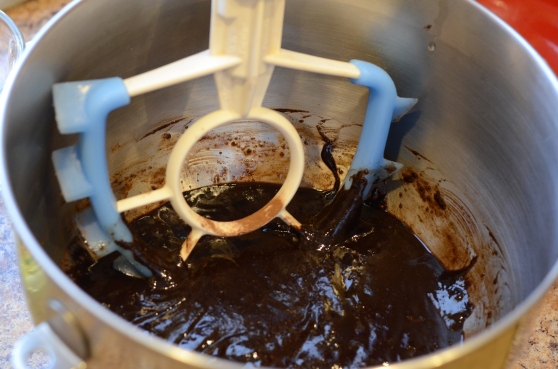
Preheat the oven to 350°F. Grease or spray your pans or muffin tins and then pour or scoop in the batter.

Bake for about 25 minutes to start, and use a toothpick or cake tester inserted into the center to check that it comes out clean–that means it’s done.
To make the icing:

My espresso powder had hardened into chunks, which wouldn’t break up easily, so after a minute or two, I simply removed the chunks from the liquid.
Dissolve the espresso powder or instant coffee in the hot water, and set it aside. I suppose you could use 2-3 teaspoons of strong coffee in its place.
Melt the butter in a saucepan over low heat. While it melts, sift the confectioners’ sugar into a large bowl. To the butter, add the yogurt, buttermilk or sour cream and mix well. Keep an eye on the pan and bring just to a boil.
Pour the mixture into the bowl with the confectioners’ sugar along with the espresso/water. Beat slowly until any lumps are gone. The icing will be very thin and drippy, so it is best to let it cool and stiffen for a bit before spreading on the cupcakes.








